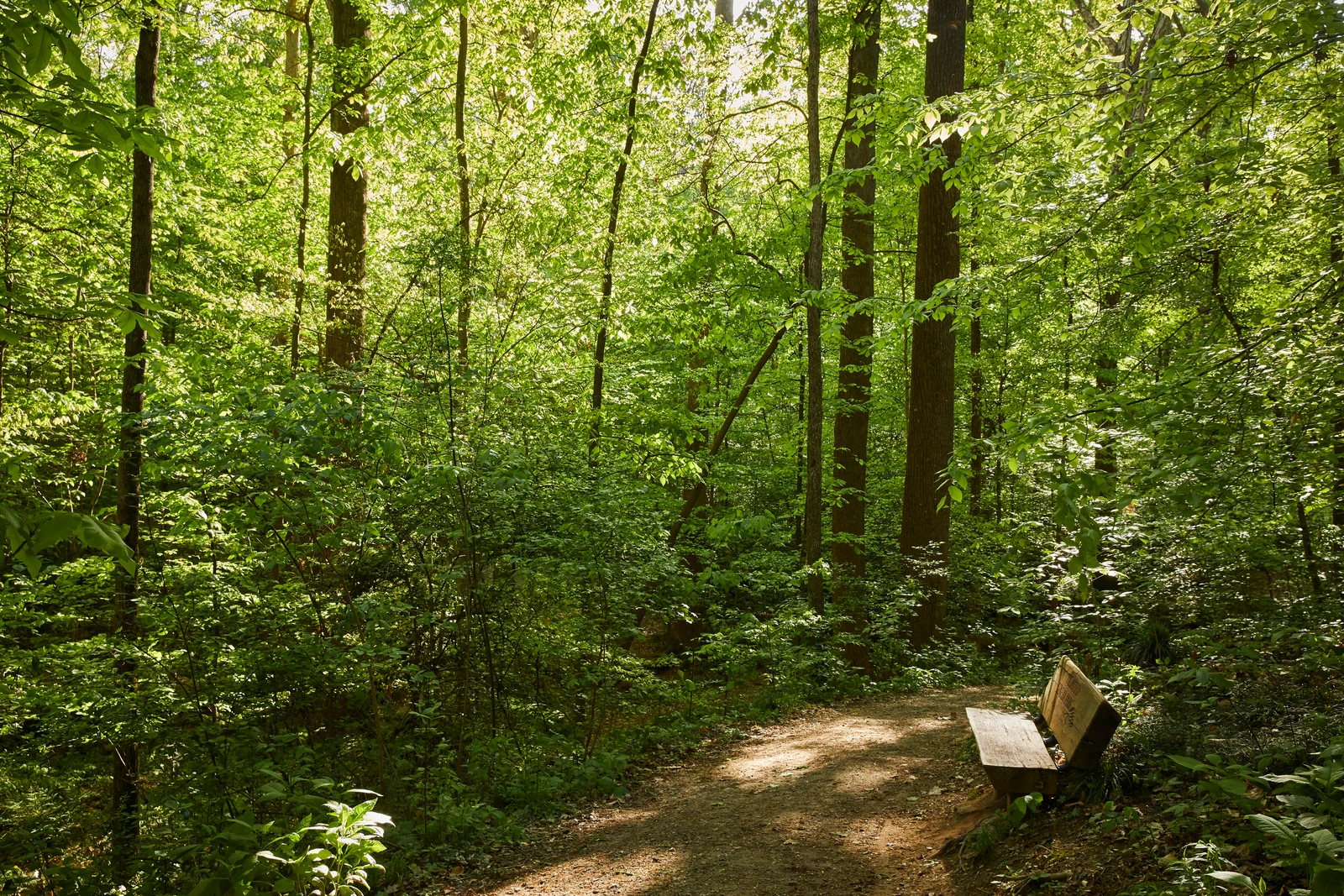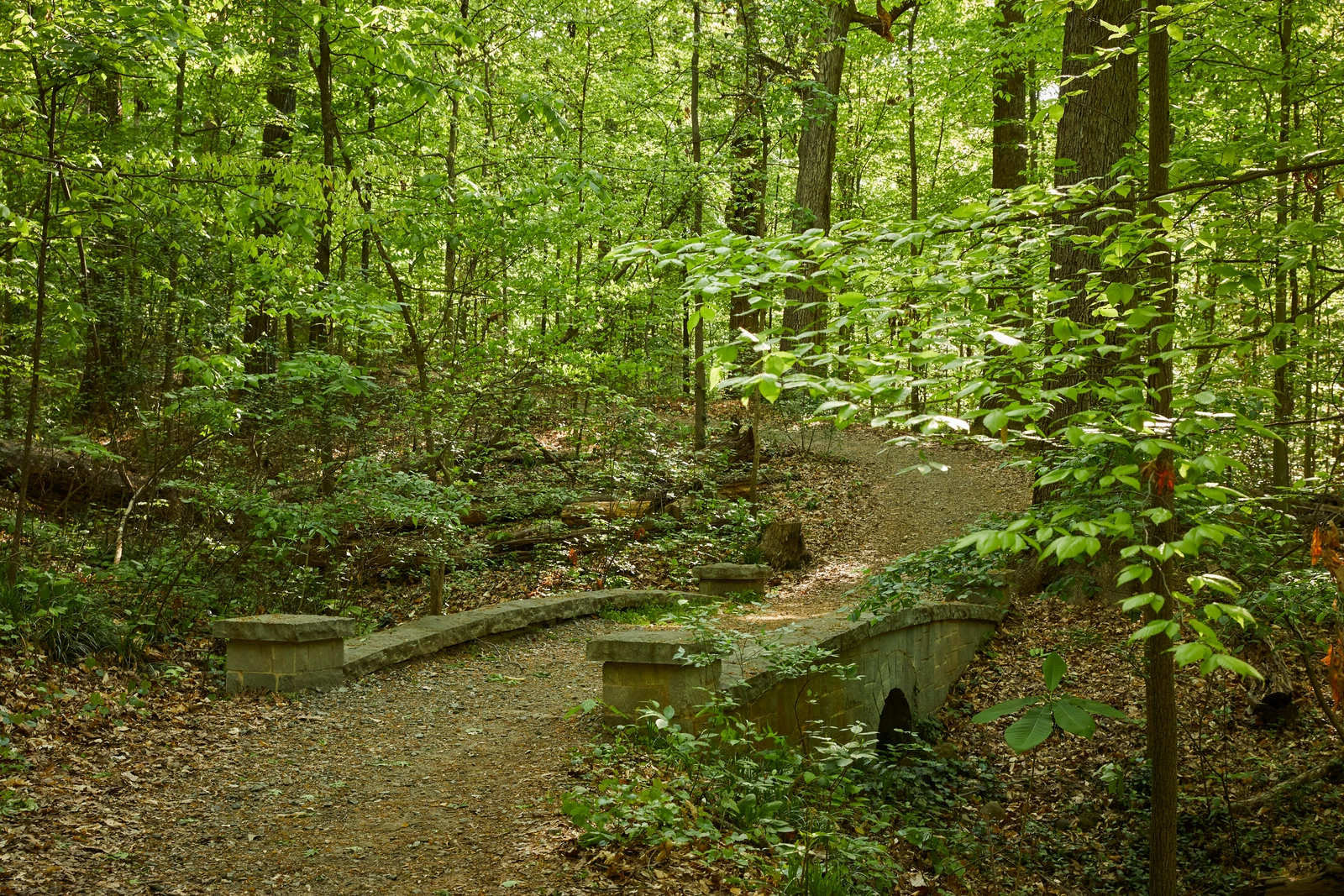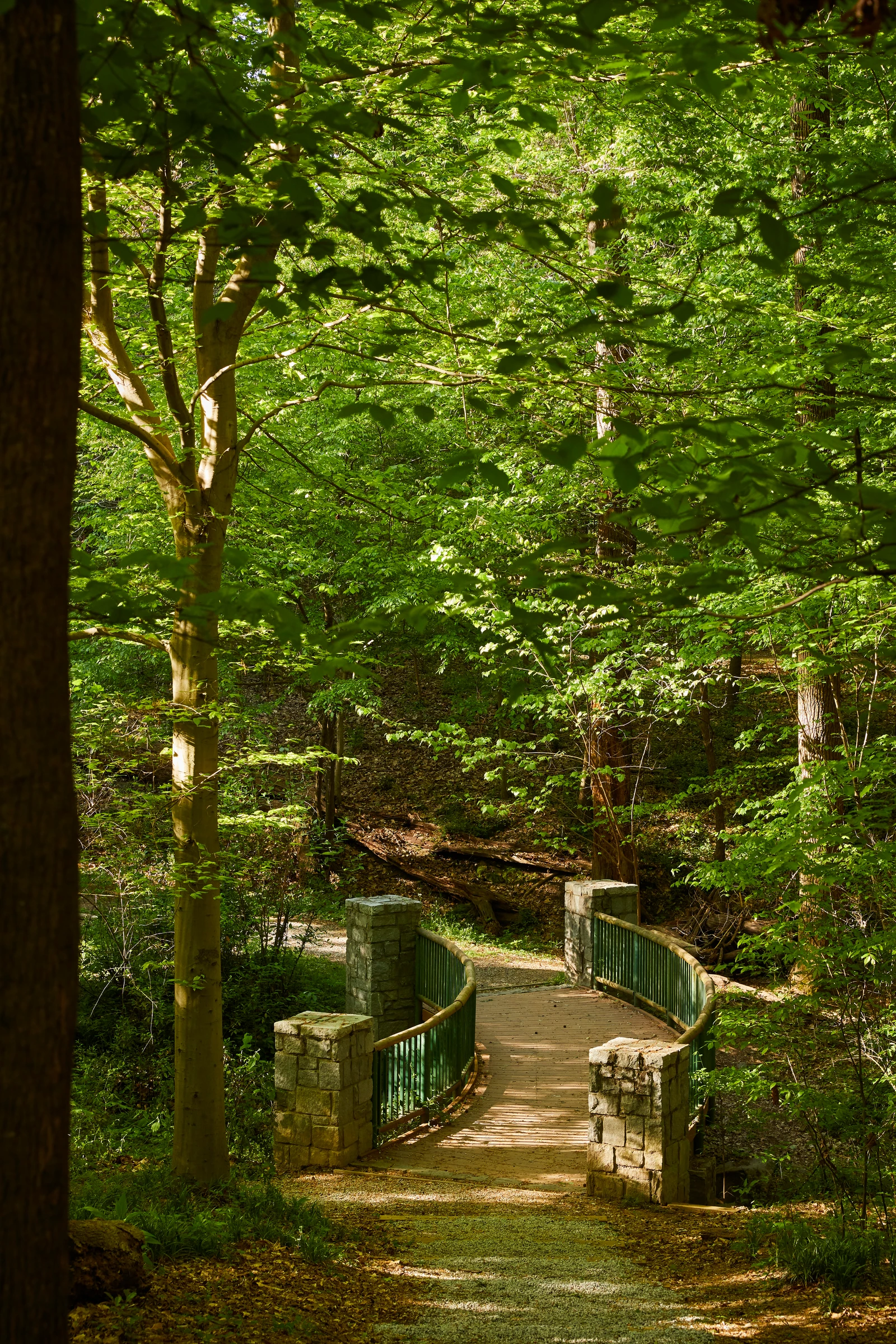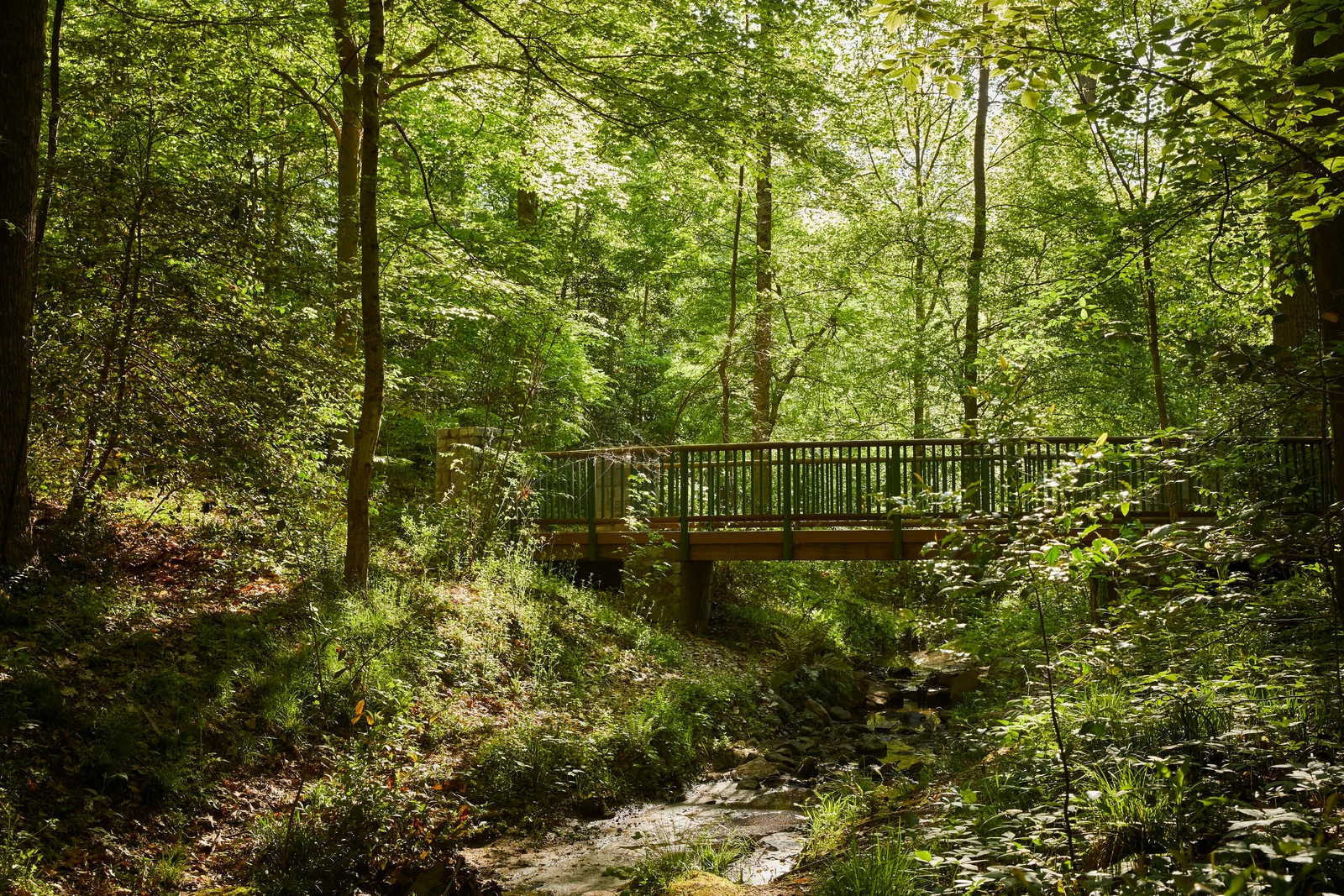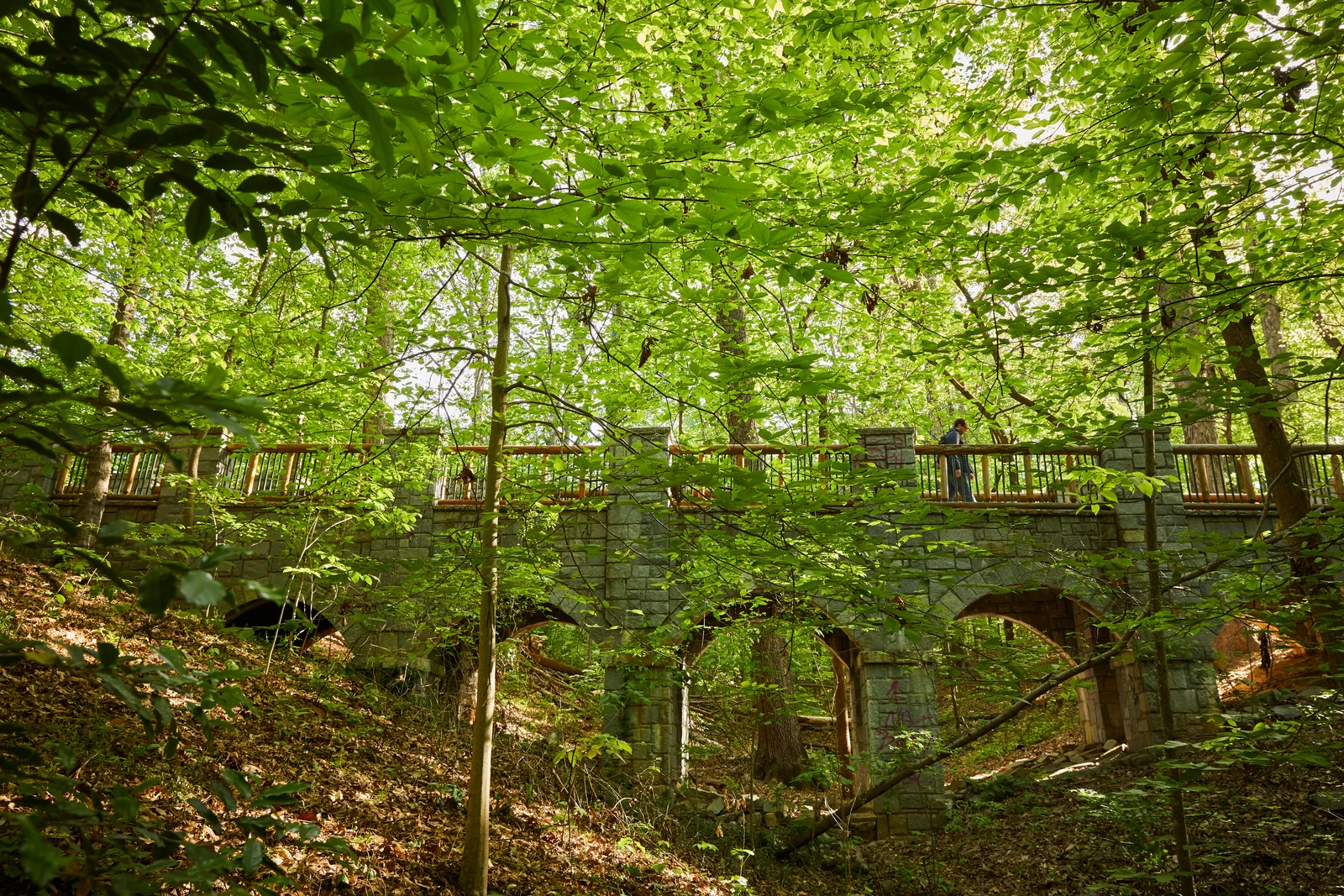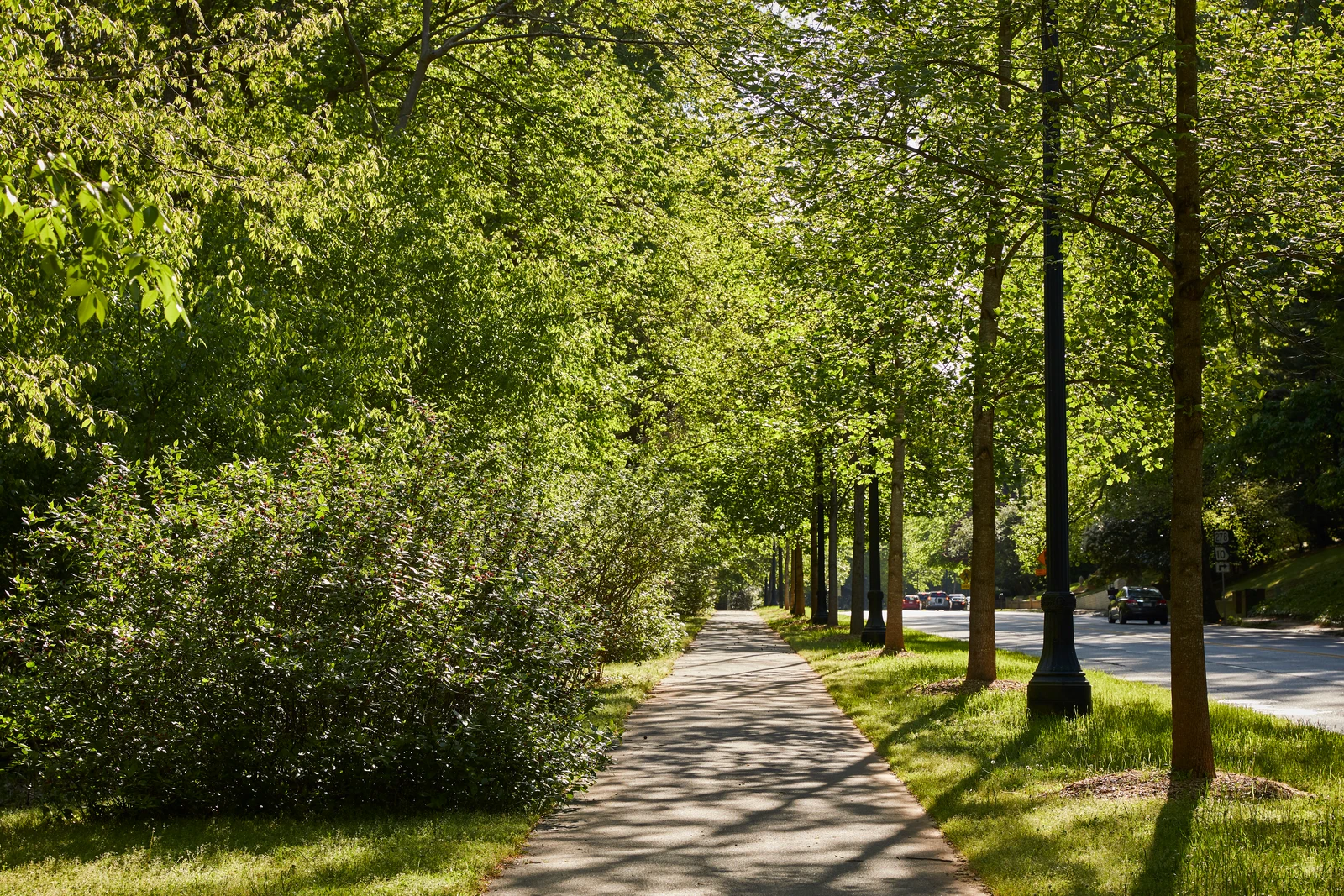Description
Deepdene Park, the final and largest segment of the Olmsted Linear Park Alliance (OLPA) restoration, spans 22 acres and posed significant challenges, including steep grades, severe erosion, and infestations of invasive plants like English ivy. This ambitious project required innovative solutions to restore its ecological balance while honoring its historical significance.
A four-acre demonstration area proved invasive plants could be controlled, slopes stabilized, gorges crossed, and native trees planted. Building on this success, the team addressed a century of erosion caused by a large drainage pipe, using the Rosgen Method for stream restoration. This included constructing cross vanes, pools, and riffles to stabilize water flow. Graded slopes were fortified with coir fabric and planted with water-tolerant native species, ensuring long-term stabilization.
A path set back from Ponce de Leon Avenue, lined with 61 tulip poplars, conceals utility lines while enhancing the park’s natural beauty. Despite budget cuts that reduced the planting budget to one-third, careful planning ensured the restored areas flourished.
Services
- Community Engagement
- Project Management
- Historic Preservation/Restoration
Highlights
- Removal of invasive species across
- Stream restoration using the Rosgen Method
- Stabilization of slopes with native plantings and coir fabric
- Accessible pathways seamlessly integrated into the landscape
Results/Impact
Deepdene Park is now a thriving urban forest, blending ecological restoration with historical preservation. It provides a serene, accessible space for the public, fulfilling Frederick Law Olmsted’s vision of harmony between nature and community.
